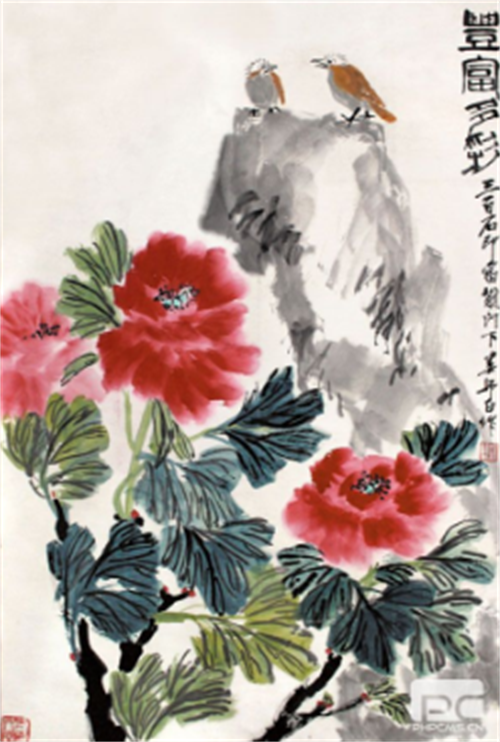凡收藏的字畫,放在封閉的箱、櫥、柜內,使字畫能擁有一個穩定的有限空間,避免直接受侵蝕和污染。但這并不是說一旦放進去就萬事大吉,因為它還是會受到侵蝕的,保存久的遼畫被蟲蛀是常見的一種毀壞現象。在南方潮濕的氣候環境下,即使做足保養功夫,書畫的受潮也是難以完全避免的,那么書畫作品受潮了怎么辦呢?
濟南收購字畫人員為您講解。
All collected calligraphy and painting are placed in closed boxes, cabinets and cabinets, so that calligraphy and painting can have a stable limited space and avoid direct erosion and pollution. But this does not mean that everything will be all right once it is put in, because it will still be eroded. Worm eaten Liao paintings that have been preserved for a long time are a common phenomenon of destruction. In the humid climate environment in the south, even if you do enough maintenance, it is difficult to completely avoid the dampness of calligraphy and painting. What should you do if the calligraphy and painting works are damped? Jinan acquired calligraphy and painting personnel to explain to you.

即使有恒溫恒濕,博物館里的書畫也會被水汽影響,家庭藏畫更是難以避免,如果發現書畫有了霉點,可以先用宣紙輕輕掃表面看看能否,如果不能就要揭裱了,因為霉點會慢慢蠶食,后形成一大片,對書畫危害很大。但揭裱不在春天的時候進行,比較適宜在秋天,起碼七八月才開始。拿出來后要‘洗畫’,經過一套復雜的程序,揭裱始終是對畫的傷害,所以應盡量防止發霉。
Even if there is constant temperature and humidity, the calligraphy and painting in the museum will also be affected by water vapor. It is even more difficult to avoid the family collection of paintings. If you find that there are mildew spots in the calligraphy and painting, you can use rice paper to gently sweep the surface to see if they can be removed. If you can't, you need to uncover and mount them, because the mildew spots will slowly nibble and form a large area, which will do great harm to the calligraphy and painting. However, the uncovering and mounting will not be carried out in spring, but rather in autumn, at least in July and August. After it is taken out, it is necessary to 'wash the painting'. After a set of complex procedures, uncovering the painting is always harmful to the painting, so try to prevent mildew.
濟南收購字畫提醒藏家,書畫拆框揭裱出來后,如果發現有很多水汽,就要開空調抽濕,但千萬不能曬太陽,因為宣紙見太陽會變脆,一變脆就會碎掉了,只能用慢慢風干的辦法。
The purchase of calligraphy and painting in Jinan reminds collectors that if they find a lot of moisture after the calligraphy and painting are removed from the frame and mounted, they should turn on the air conditioner to extract moisture, but they should never be exposed to the sun, because the rice paper will become brittle when it sees the sun. Once it becomes brittle, it will be broken, so they can only dry it slowly.
回南天一過,就可以把書畫拿出來掛掛。因為之前吸收了潮氣,要放在通風的地方晾,但不要在陽光下直曬。必要時還可以用吹風機輕柔的吹吹,但注意不要吹同一個地方,以免過熱,同時要留意觀察畫面有何變化。
Once you have returned to Nantian, you can take out the calligraphy and painting and hang them. Because the moisture has been absorbed before, it should be put in a ventilated place to dry, but not directly in the sun. If necessary, you can also use a hair dryer to gently blow, but be careful not to blow in the same place to avoid overheating. At the same time, you should pay attention to the changes in the picture.
What should we do if calligraphy and painting works are affected with damp due to improper collection? The above is the relevant answer to the question. You can come to our website at any time for your needs http://www.lebigueone.com Message consultation!
